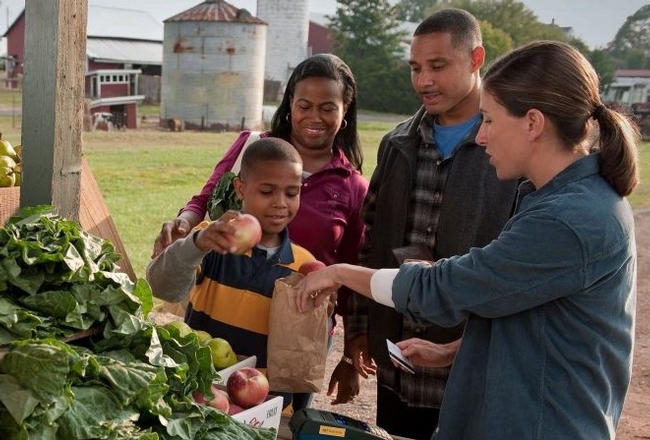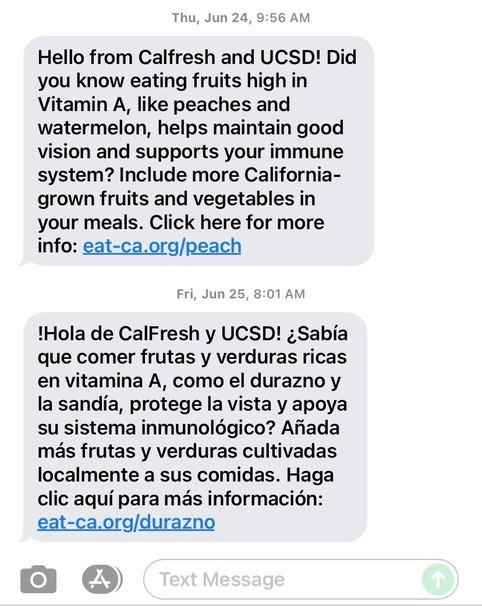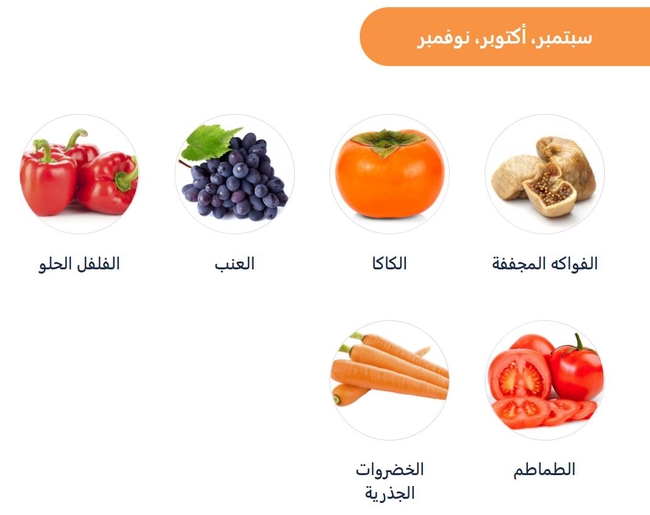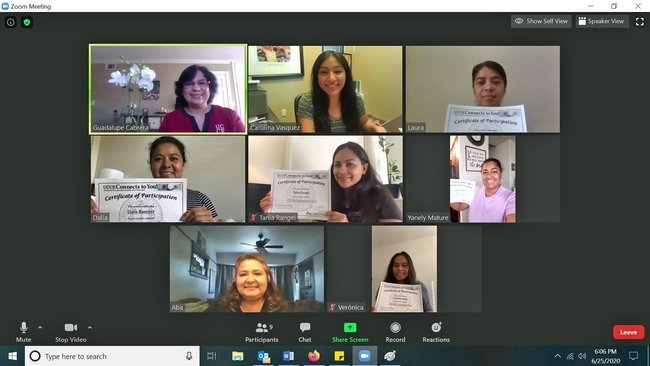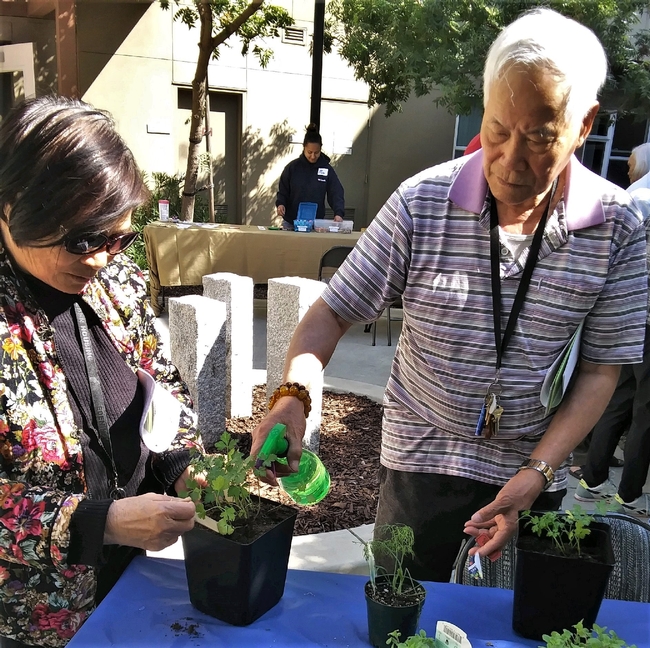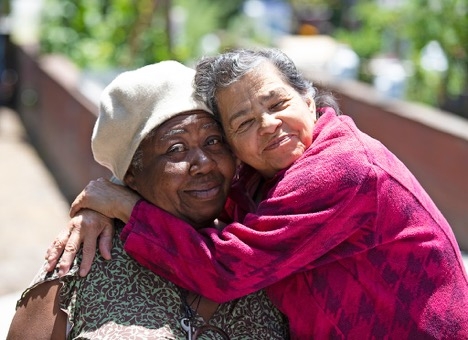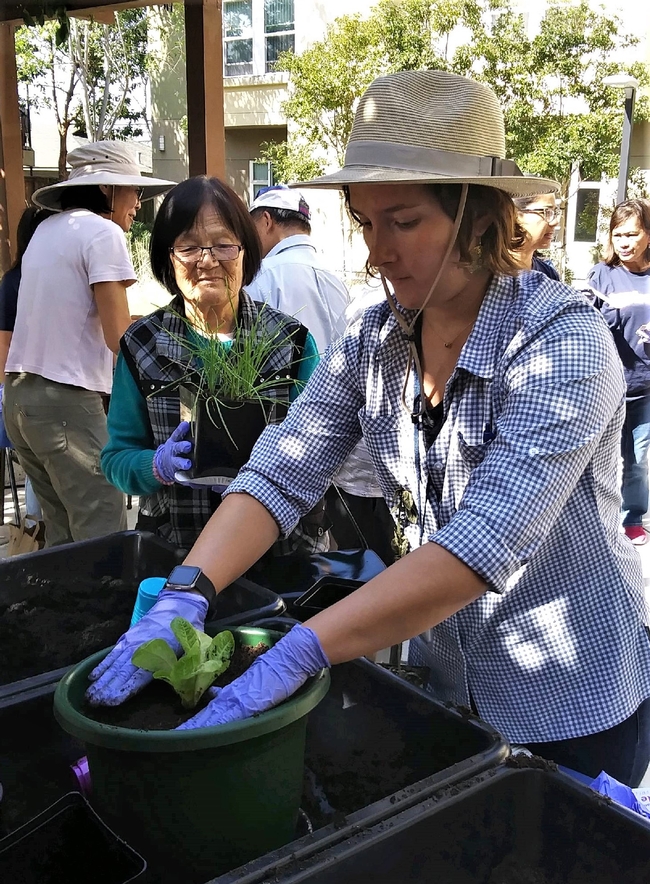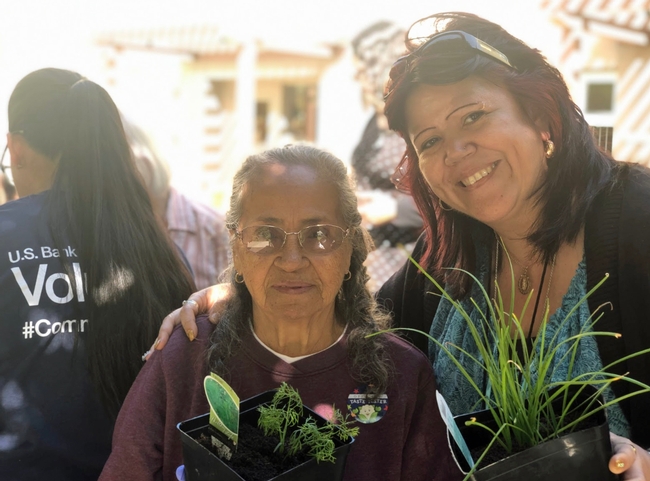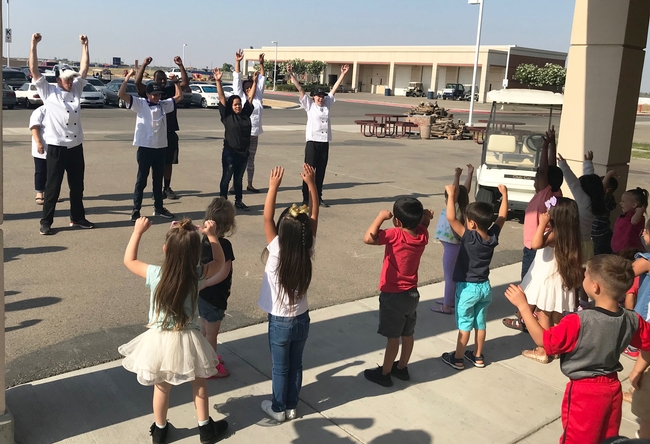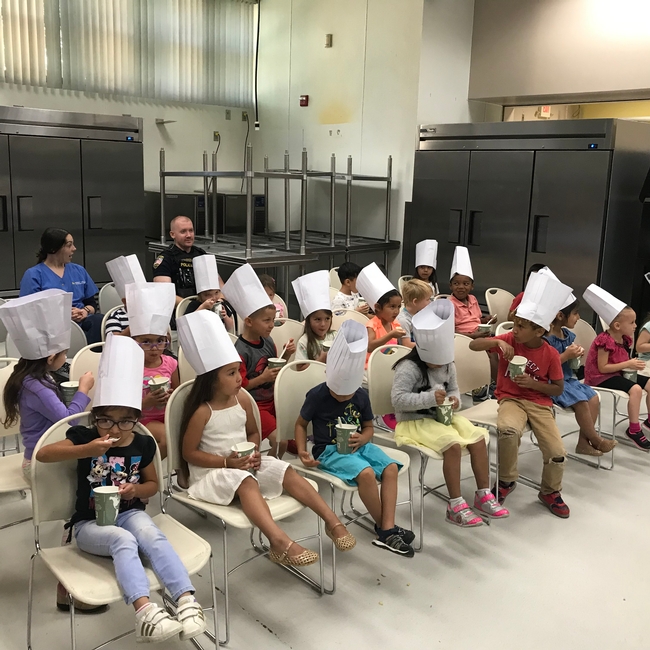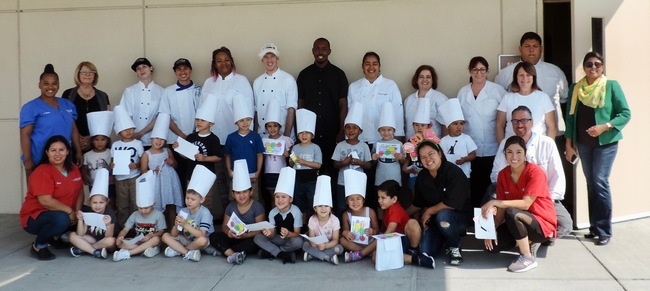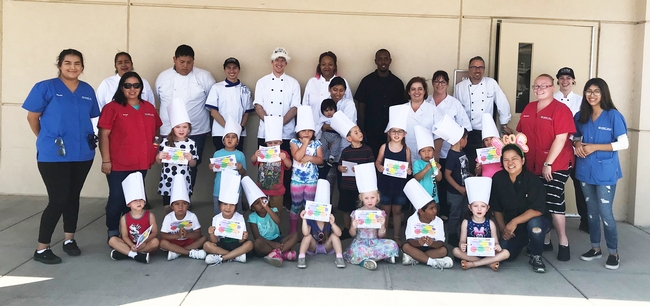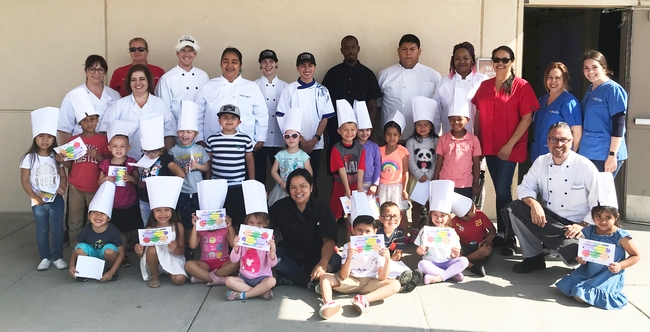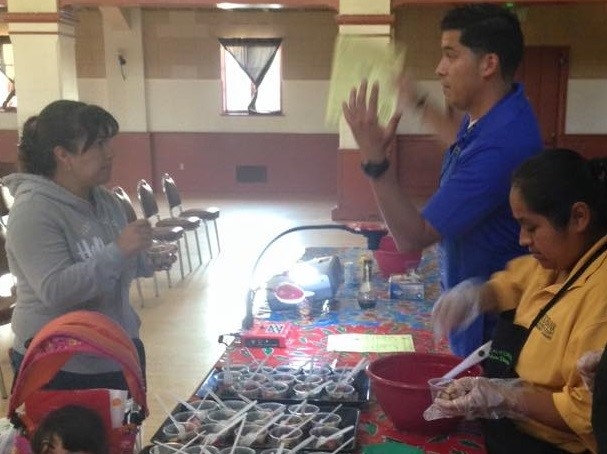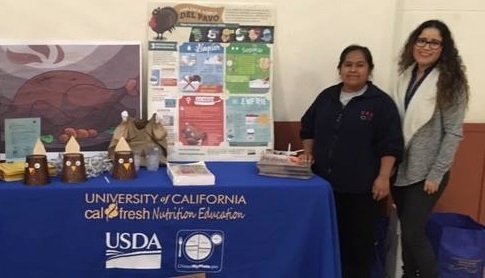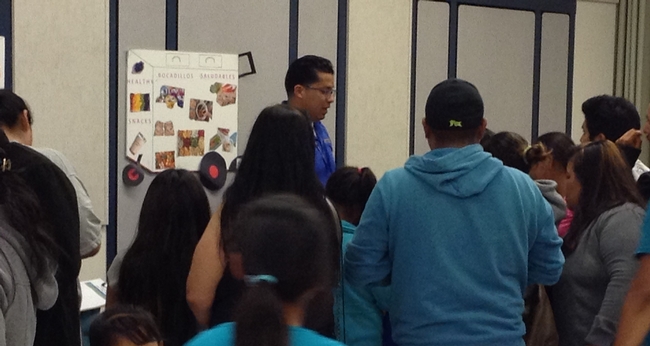Posts Tagged: Nutrition Education
CalFresh participants welcome texts on benefits of California-grown produce
The buzz or chirp of an incoming text message started some San Diego County residents on the path to a healthier diet during this past year. In September 2020, most CalFresh participants in the county – more than 172,000 households – began receiving monthly text messages about the benefits of California-grown fruits and vegetables as part of a pilot program.
This novel approach to delivering nutrition messages to California food assistance program participants was developed by a partnership of the Nutrition Policy Institute of UC Agriculture and Natural Resources, the UC San Diego Center for Community Health and the County of San Diego Health and Human Services Agency, which administers CalFresh in the county.
The HHSA, which had been using its text messaging platform to send administrative reminders and alerts, was receptive to using the tool for sending nutrition-focused information. NPI and CCH partnered with ideas42, a firm that applies behavioral science to solutions for social change, to develop a series of five text messages promoting California-grown fruits and vegetables.
The text messages – originally delivered in English and Spanish, with the addition of Arabic beginning in July 2021 – were friendly and conversational in tone.
“In a text, you have very few characters you're communicating with people, so we wanted to make sure we were using cutting-edge behavioral science to construct those messages to have the most impact,” said Wendi Gosliner, NPI senior researcher and policy advisor.
Each text included a link directing recipients to a website developed as part of the project, with information on selecting, storing and preparing California-grown fruits and vegetables; health benefits; tips to reduce food waste; and recipes – including TikTok videos.
Initially running from September 2020 to March 2021, the pilot program was well-received. Nearly 90% of CalFresh participants responding to a survey said they appreciated receiving the texts. “It is very important for us to eat healthy, to teach our children to eat healthy,” wrote one participant. “I love the recipes…they're so delicious and easy to make…I'm very, very grateful for the help because without you guys, I would be struggling more and I just want a better life for my children.”
Gosliner said it was encouraging to see that two-thirds of the approximately 5,000 survey respondents reported eating more California-grown fruits and vegetables after receiving the messages, and 85% expressed a desire to see more texts.
“What we see is that there's definitely a decent-sized population of people participating in CalFresh –now this is just in San Diego County but imagine the entire state – who would benefit from having this kind of information available to them,” Gosliner said. “And there is at least a subset of people who really liked it.”
UC San Diego's Center for Community Health was instrumental in facilitating the partnership between UC ANR and the HHSA. Further, CCH, in partnership with the San Diego County Childhood Obesity Initiative, formed a community council composed of residents representing diverse communities throughout San Diego County. Together, the council facilitated CalFresh participants to take part in focus groups, which provided feedback and guidance on the messaging and design for online resources. Gosliner said the success of the text program has been a direct result of community input and involvement.
“The Center for Community Health-led focus groups were integral to ensuring CalFresh resources were accessible and informative to a wide range of CalFresh participants, and local individuals and families more broadly,” said Blanca Meléndrez, executive director at the UC San Diego Center for Community and Population Health, Altman Clinical Translational Research Institute. “In the process, the text-based campaign also placed a greater focus on the local production of nutritious fruits and vegetables, ensuring access to healthy and nutritious food in all communities, and building new streams of income for the region's farmers and producers.”
This effort also suggests a simple way to reach CalFresh participants and bridge gaps between the Supplemental Nutrition Assistance Program and programming that offers nutrition education and healthy eating resources.
“By combining UCSD and UC ANR knowledge about healthy eating with our outreach capability, we are able to reach thousands of families via text message each month,” said Michael Schmidt, human services operations manager for the HHSA. “With the click of a button, these families are provided with resources to assist them in making healthier lifestyle choices, supporting a region that is building better health, living safely and thriving.”
The effort has been so effective that HHSA has asked for additional messages, beyond the original five months' worth of texts and resources.
“The partnership between UC ANR's Nutrition Policy Institute, UC San Diego's Center for Community Health, the County of San Diego Health and Human Services Agency and San Diego County community residents brought together a great team to develop an innovative, technology-based intervention,” said Shana Wright, San Diego County Childhood Obesity Initiative co-director at CCH. “Each partner provided knowledge, resources and assets that enhanced the project beyond the initial pilot phase, exceeding preliminary expectations.”
Gosliner said the pilot program has been a “great example and wonderful experience” of partnership in action.
“You can sit with your research or program ideas for a long time but if you don't have people who can help you implement them, then they really aren't helpful in any way,” she said. “In this case, it was just a nice combination of an idea…with partners who wanted to work to make something happen.”
Federal nutrition programs respond to COVID-19
In the spring of 2020, UC Agriculture and Natural Resources' Expanded Food and Nutrition Education Program (EFNEP) and the CalFresh Healthy Living, UC (CFHL UC) Program faced the unprecedented experience of shelter-in-place and school closures due to COVID-19. Both federal nutrition education programs relied on in-person contact by UC Cooperative Extension nutrition education staff as a means of building and sustaining relationships with community members, stakeholders and partners serving vulnerable populations.
CFHL UC and EFNEP state office staff, in collaboration with the Center for Nutrition in Schools, reacted quickly to serve their clientele's needs. The coordinated effort of state office teams resulted in the dissemination of a staff needs assessment, which culminated in the training of over 150 educators and supervisors to quickly pivot lessons for online and distance learning. State staff and educators began designing online curricula delivery models to re-engage students, creating a library of virtual lessons with distance-learning strategies. This included using Zoom, social media platforms such as Facebook Live and YouTube, and learning platforms such as Google Classroom. To provide quality assurance, reach and outcome measures also began undergoing adaptation for this new learning environment.
Examples of new remote learning capabilities include:
-
More than 60 online lessons under development for children pre-kindergarten through 8th grade that emphasize healthy eating, active living and gardening.
-
CalFresh Healthy Living, UCCE county programs are developing the online delivery of five adult curricula, including UC-developed Plan, Shop, Save and Cook and Making Every Dollar Count that provide food resource management tips, as well as ideas for how to stay active and purchase healthy food on a limited budget. These lessons are particularly valuable at this time of high unemployment.
-
EFNEP's Technology and Social Media Plan includes a pilot of ‘blended learning' using mail, phone and video chat for our UCCE Connects to You Series. CFHL UC also utilizes mailings and phone call follow-ups with this curriculum.
Further, CFHL UC educators are offering lessons and short educational segments online, maintaining school gardens, working at food banks (with the permission of local county directors) and, in partnership with school meal programs, offering complimentary nutrition education and physical activity take-home lessons and resources to students and families at meal pick up locations. Youth engagement projects continue to engage student leaders online through Youth-Led Participatory Action Research (YPAR) projects.
In response to COVID-19, the EFNEP and CFHL UC state and county staff continue to build and enhance the skills of our educators while serving California's most vulnerable communities. These efforts are critical to maintain trusted relationships, which both programs successfully established over decades of service to promote healthy people and communities in California.
Seniors grow food and friendships in gardening, healthy living program
“I didn't know I would get so much soil today, now I can grow more cucumbers in my room!” said Miss Anita as she placed fresh soil into her plant pottery on Community Planting Day. The Estabrook Place resident was a first-time participant of a new gardening program for older adults hosted by the University of California Cooperative Extension in Alameda County.
The UC Cooperative Extension senior gardening program integrates healthy eating, active living and gardening education. Miss Anita was one of 200 seniors who participated in the gardening and nutrition education program led by Katherine Uhde, a CalFresh Healthy Living, UC community education specialist, in collaboration with the UC Master Gardener Program of Alameda County.
According to the National Institute of Aging, older adults experience high levels of social isolation and loneliness, which lead to an increased risk of chronic conditions such as high blood pressure, depression and obesity. Educational activities that promote a healthy lifestyle and encourage interaction with peers are recommended to prevent these conditions in aging adults.
“We need to be able to address the needs of our greying generation and focus on prevention rather than treatment,” explained Mary Blackburn, UC Cooperative Extension nutrition, family, and consumer sciences advisor, about the benefits of group-based wellness activities for seniors.
The senior gardening program was developed by Blackburn and tested at Palo Vista Gardens Community, an Oakland Housing Authority-managed senior property. It is part of a larger quality of life study on the health of aging adults being conducted at seven Eden Housing sites with CalFresh Healthy Living, UC, which serves diverse populations of people who are eligible for the Supplemental Nutrition Assistance Program, also known as CalFresh food. Through nutrition education and physical activity classes, CalFresh Healthy Living, UC empowers seniors and other underserved Californians to improve their health.
This is the first project that CalFresh Healthy Living, UC partnered on with Eden Housing, a nonprofit provider of affordable housing in Alameda County. Through the collaboration, Eden Housing residents are able learn about nutrition, food safety and gardening concurrently at their living facilities. Residents learned how to grow fresh herbs, including marjoram and basil, while learning the benefits of cooking with them.
In past research, Blackburn found unsafe food handling practices used by over half of the fixed-income seniors and food handlers and caregivers serving seniors surveyed in 10 counties. At the Alameda County location, a UC Master Food Preserver volunteer, trained in Solano County, offers safe food handling classes.
Because the residents speak various languages including Cantonese, Vietnamese, Spanish, and Korean, CalFresh Healthy Living, UC has partnered with the Volunteer Health Interpreters Organization to connect certified, student volunteer translators to assist the participants. This partnership allows UCCE educators to communicate with participants in their native language and allows residents to more easily interact with their neighbors and develop friendships.
To paraphrase the African proverb “It takes a village to raise a child,” it takes a community to meet the needs of people with various physical and mental abilities, cultural backgrounds and life experiences.
On Community Planting Day, every senior resident is smiling as they dig their hands into the dirt to make room for a seed or seedling. Residents who were strangers before the event are exchanging ideas of what they would like to grow, and like Miss Anita, are enthused to grow more vegetables.
To assess the benefits of the gardening program for seniors, Blackburn is working with Lisa Soederberg Miller, director of the Adult Development Lab and professor in the Department of Human Ecology at UC Davis. They hope to share what they learn with others who wish to establish a similar program for seniors in their community.
Together, we can make a difference!
UCCE in Kings County leverages community partnerships to increase preschoolers awareness about healthy foods
Early childhood is critical to the development of lifelong healthy living. With this intent, UCCE, in partnership with the Department of Hospitality Management at West Hills Community College-Lemoore and preschools located at the college campus, embraced a collaborative approach to promote healthy eating by helping preschoolers learn about and taste Go Glow Grow foods.
Together, we can make a difference!
An innovative and collaborative integration of research and practice brought diverse stakeholders together.
- Deepa Srivastava, UCCE Advisor Nutrition, Family & Consumer Sciences from Tulare/Kings initiated the needs assessment, monitored evaluation process, and conducted focus groups.
- Susan Lafferty, Nutrition Educator of Kings County UC CalFresh nutrition education program implemented the Go Glow Grow curriculum.
- Nancy Jeffcoach, Site Supervisor of West Hills Child Development Center, Lemoore planned the timeline for preschoolers who received the curriculum.
- Christian Raia, Program Director /Coordinator Hotel Restaurant Casino Management Faculty-West Hills College planned and supported the culinary students' implementation of food demonstrations, taste tests, and recipe sharing. The reinforcement of Go Glow Grow MyPlate food group concepts was integrated into students' capstone project.
During April and May 2019, collaborative partnership efforts captivated preschoolers' attention with key MyPlate messages and taste tests. Susan Lafferty led six weeks of the Go Glow Grow curricula with 72 preschoolers. Twelve community college students from the culinary department shared recipes and conducted food demonstrations and taste tests. Nine preschool teachers consistently supported the program. Preschoolers received a graduation certificate and a chefs hat upon completing the program.
“Glow foods make my hair grow, eyes sparkle, and skin soft."
Initial success stories, lesson observations, and activities indicated increased knowledge of preschoolers about MyPlate food groups and willingness to try foods from all food groups. A majority of preschoolers responded to the importance of eating Go Glow Grow food.
Taking home key messages
It also seems the preschoolers are taking key messages home. One preschool teacher mom shared this story:
So [preschooler name] is eating her dinner and she looks up at me and says, "ya know, chicken isn't on my plate."
"Um, yes it is, it's right there..."
"No," she says,"it's not anywhere on My Plate!"
"Oh, like the healthy choices My Plate? Yes it is, it's protein. I think it's red."
"Red is fruit momma, it's a glow food!"
So at this point I pull up the graphic. She is right–that it would be purple as a protein. She informs me that I should study it. But she'll help me and show me where the vegetables are as she loudly chews a cucumber in my ear. She's been telling me which foods have which vitamins and bringing the conversation to the table at every meal.
"You guys are doing amazing things. I see it in my program and now I get to see it in my child. So thank you!"
Positive learning experiences result from meaningful interaction
Upon completion of the program, two focus groups were conducted to understand the program impact at the individual and environmental levels of the social-ecological model. It was encouraging to note the response from participating community college students about their learning experiences and the changes that they have observed for themselves and the preschoolers as a result of this program.
A majority of the students indicated that they “loved” Go Glow Grow concepts of MyPlate and the meaningful “interaction” with the preschoolers.
A sustainable foundation is established
Overall, “mutually reinforcing goals, collective impact, commitment, trust, consistency, strong partnerships and communication, curriculum, evaluation tools”- all factored in to keep the momentum for the community partners.
What began as a needs assessment to examine the nutrition practices of early childhood education settings, ended on a promising note to continue promoting the health and well-being of young children. Indeed, a strong and sustainable foundation is established to carry forward UC Agriculture and Natural Resources' strategic initiative of healthy families and communities.
With nutrition education, a conversation may be more fruitful than a lecture
How do we support low-income Latino families with appropriate nutrition education that makes a difference in their lives? This was the question staff with the UC CalFresh Nutrition Education Program in San Luis Obispo and Santa Barbara counties were asking ourselves as we prepared for a monthly presentation at the THRIVE Healthy School Pantry in Santa Maria, California.
While many nutrition education programs work with local food banks to provide food demonstrations and nutrition information at supplemental food distribution sites, often, these classes can feel rushed. People are likely hurrying to pick up their food and so there is little time for more than just one-way communication where the educator provides the information and participants listen. Other times families may feel obligated to stay for the nutrition lesson in order to get their bag of food for their families.
This was the experience of our UC CalFresh Nutrition Educators delivering presentations and recipe demonstrations at the Healthy School Pantry food distribution. The Healthy School Pantry is a monthly food distribution focused on increasing food security and providing a strong social network for families to access a wide variety of community resources in English and Spanish.
When our nutrition education team started working at the Healthy School Pantry, the set-up was similar to a formal classroom environment where there was a teacher and students. The students (in this case, parents and families) would sit in rows, while the nutrition educator stood up front with a projector and microphone providing nutrition messages and a recipe demonstration using food from the pantry. We would include skills for preparing a recipe, and offer food samples and practical tips related to USDA's MyPlate.
After a few of these formal presentations, we began to notice that many parents were not interacting. We would ask for questions or suggestions on how participants could use this information or recipe, and most would respond with silence or politely, “todo está bien, gracias” [“everything is good, thanks”]. We also noticed other families would try to get past our table without making eye contact in order to leave. It became apparent that the families, for various personal or cultural reasons, did not feel comfortable participating and interacting in this formal class setting. Others just did not want to sit and listen for 15 to 30 minutes if they weren't sure that the information was going to be relevant to them.
Taking this into account, we decided to modify our approach. First, we got rid of the microphone and projector and moved our table into a high traffic area more integrated with the other community resources. Next, we changed our presentations to be more participatory and conversational. We set up our table with a colorful display and often a food sample, and then we walked around to the front of the table where we could greet and approach the families without a barrier. At one recent event, we brought an activity wheel and some basic physical activity equipment like jump ropes and stretchy bands. Parents walked right up and started to spin the wheel. When it landed on an exercise they would grab the equipment and start doing the activity and asking for tips. We were so surprised that they wanted to actually do the exercise right then and there and were really interested in talking to us about how they could get more physical activity in their busy lives. At one point we had a long line of parents waiting.
With these small changes, parents are provided more individual attention and an opportunity to have a conversation with the educator rather than feeling like they are students in a classroom. We are able to have more meaningful conversations and the parents are the ones approaching us and asking, “What recipe are you preparing today?” Parents are initiating the conversations and once we engage with them, they have many more questions about the ingredients, where to get them and the dialogue continues in a natural way that is meaningful and relevant to their lives. We are also able to clear up some misconceptions they may have. For example, we have heard many parents say they think that canned or frozen fruits are not healthy. Once we have their trust we are able to clear up the misinformation and let them know that canned and frozen produce can be an economical way to get more fruits and vegetables in their diet and, as long as there isn't added salt or sugar, can be just as healthy as fresh produce.
Within these conversations we take the opportunity to provide nutrition messages and tips, but we also have the opportunity to hear the parents' perspectives and comments. For example, one participant commented on a recipe they were demonstrating saying, “I really like the bean and garbanzo salad because it's nutritious, it has iron, vitamins and it is really easy to make.”
For our larger nutrition education program, this method has brought about additional benefits, including the opportunity to build stronger relationships with parents in the community and to talk to them about what our program is doing with their children during the school day. One mother who had approached our table several times in the past told us, "For me and my family, we have changed a lot about how we eat. We eat healthier and cheaper and we spend less on buying junk food. My children like what they have been taught in their classes by your program. That's why I like it because my children no longer like to eat things that are not healthy.”
Through these conversations, we see that families are leaving our table more informed and are more willing to seek out and approach our table the following month. The level and quality of interaction has increased and we are able to see and hear about the impact of our work and modify or change approaches based on the suggestions from the families.
We will continue with this successful education delivery model because we have seen and heard the satisfaction of the families and have received a lot of great feedback from parents. These small successes that are revealed to us through mutually respectful conversations keep us motivated to continue to provide services and promote a healthier community in a way that respects and values the experiences and knowledge that our families share.


